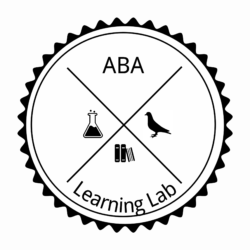James Macon, M.Ed., BCBA
As many Behavior Analysts will confirm, it can be difficult getting new Behavioral Technicians to deliver the right amount and type of verbal reinforcement. This usually is centered around discrete trial training (DTT) or natural environment teaching (NET), and a failure to make verbal praise function as a true reinforcer. To put it bluntly, simply saying “good job” is not a reinforcer. The label itself, “good job,” only has meaning and value to those who have (1) a learning history with the phrase, usually as a result of pairing, or (2) more complex rule governed behavior, to infer their performance was “good.”
I’m not suggesting we completely abandon the phrase, but instead, would support adding to it. It’s the intonation, or enthusiasm that most likely makes the phrase function as a reinforcer (at least initially), and therefore, it should be abundantly clear to our learners when they are hearing an instruction and when they are receiving verbal praise.
Besides making our verbal reinforcers more “enthusiastic” and “genuine” sounding (I’m not going to operationally define either of those), it’s noteworthy to mention some of the brain’s neurochemical behavior going on behind the scenes.
When a person comes in contact with reinforcement, dopamine is released into the brain. When dopamine is present, learners are more likely to retain that information (or repeat that behavior in the future). This is true whether we are talking about gambling, sex, taking drugs, or in the case of our clients, an adaptive imitative response (for example, and assuming that the response is properly reinforced with the correct magnitude and the relevant motivating operation is in place).
Getting back to the behavior analysis of it, and to use a technical definition, we know that reinforcement is the response contingent presentation of a reinforcer resulting in an increased frequency of that response. When a response is reinforced, we can expect to see more of it in the future. And from the learners perspective, when a person sees an opportunity to earn a reward, dopamine levels start to increase. And when dopamine levels are elevated, behaviors are much more likely to occur again in the future. Sounds kind of like Pavlov’s dog, right?
This information isn’t new to BCBAs, far from it in fact. But for newer behavioral technicians, or those who find themselves stuck using the same phrases, we should be asking ourselves if our verbal praise truly is functioning as a reinforcer. Are the desired response frequencies increasing? Does our verbal praise sound genuine and enthusiastic? Is our intonation flat or does it change? And most importantly, does our client appear to be having fun?
When done properly, DTT with young clients should look like a party. Our clients should love going to the table and “working,” because that’s where all the fun happens! Aim for the dopamine train, and your clients will be having a blast while they learn. If the DTT session feels like work however, it may be time to evaluate whether reinforcement is actually occurring, or if it’s just a bunch of “good jobs.”

